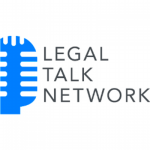The big news story, at least in social media circles, has been the lawsuit filed by Horizon Group Management LLC against Amanda Bonnen for her tweet about her apartment. Several comments that I have read relating to this matter have taken Horizon to task for filing suit over a tweet by a person who had only 20 (or so followers).
That, however, is not what I want to address. I presume that Horizon is doing what it wants to do and that it has both a legal and business reason for pursuing the course of action that it has taken. Thus, I am not here to criticize Horizon’s actions, but instead to address the question of what people or businesses should do if they believe that they have been defamed online (especially in a social media situation).
Any such discussion must first begin with an acknowledgment that businesses have been able to turn customer service problems into positive experiences by monitoring social media and responding to complaints. One of the best stories I have seen on this was one in which a Kabuki manger saw a tweet an apologized to the person while she was still in the restaurant.
On the other hand, there have also been situations in which companies have fired off a cease & desist letter that has been ridiculed. In fact, the EFF along with a variety of universities has compiled a database of cease & desist letters.
The qustion thus becomes, what do you do if someone online has said something about you or your business that you don’t like.
One option, of course, is you can try to correct the problem by contacting the person directly. As can be seen from the above stories, not only can that work out well for you, it can also lead to some good PR. Keep in mind, however, that not all feel-good stories make it to the mainstream press.
If you can’t satisfy the person’s problem or (for whatever reason) do not want to satisfy the person’s problem you can, of course, start your own PR campagn to dispute the posted info, you can ignore the posted information, or you can take action against the poster.
If you decide to take action against the poster, I urge you to search for an attorney who understands how social media works and what the service is. Sometimes, a lawsuit is a legitimate option to take. However, you should find an attorney who understands the pitfalls that arise at the intersection of litigation and social media.
Sometimes, to achieve the result that the client is looking for, a lawsuit is the only available option. Other times, however, familiarity with online sites and their working may allow a problem to be resolved, short of litigation. I once represented a client who was concerned about some critical comments that had been made about his business on a online forum. After reviewing the posts and the applicable terms of service, I realized that the posts violated the forum’s terms of service. I contacted the forum operator, pointed out the terms of service violation, and the forum operator removed the postings.
Of course not all problems can be solved this easily. However, the key thing to remember is that if you decide that you are considering taking action with respect to a defamatory comment posted on a social networking site, weigh the consequences of taking action against not taking action, and look for an attorney familiar with social media and its potential affects on your litigation.
 on the podcast.
on the podcast.